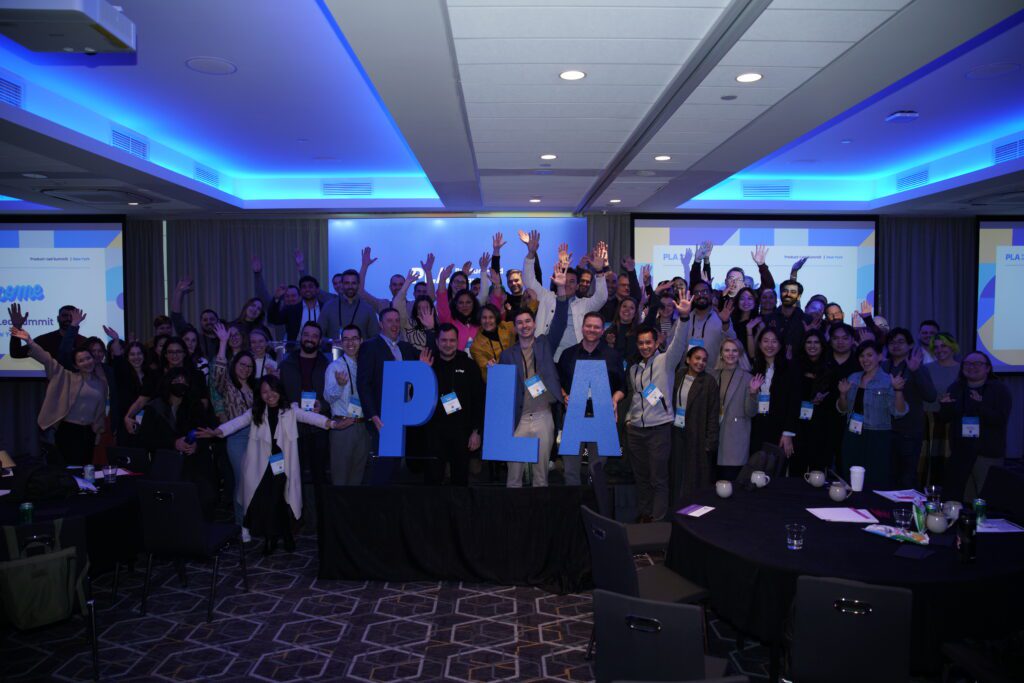Ocean’s 11. “The A-Team.” All those Fast & Furious movies… US popular culture is littered with examples of assembling all-star teams to overcome the odds and combine their unique skill sets to save the day or pull off a heist.
Although your organization may not employ car thieves, cat burglars, or demolition experts, your teams are still a collection of diverse individuals that bring a range of experiences and talents to the table. How will you bring out the best in what everyone has to offer while adapting to unexpected changes in your company, teams in this COVID-19 world?
After years working in and coaching numerous software development teams, O’Reilly recently released the second edition of my book on how to get better at adapting to changes in teams, called Dynamic Reteaming. The book focuses on how organizations grow, shrink and change as a natural occurrence. Since your organization is going to change anyway, you might as well lean in, and get better at thriving in times of change as opposed to floundering in it or trying to fight it.
So how do you transform your changing team into a symbiotic superteam? And how do product managers fit into the equation? Start with doing a calibration with your product team.
What is a Team Calibration?
Your “team” is your fellow travelers on this particular phase of your professional journey. They are the team (both ad hoc and formalized in nature) you must work with to bring your product vision to market.
Depending on the task or project at hand, its size may vary, as may the unique personalities comprising the team. But what you all share is a need for clarity, alignment, and collaboration to accomplish your collective goals. Team Calibrations are a proactive way to manage the changes in your team to drive your work, and relationships forward.
Product Managers Play a Critical Role in Team Calibration
There’s no designated facilitator for team calibrations in many organizations, however, product managers are in a prime position to take on this role. Product managers are used to creating alignment and communicating with cross-functional groups, so they should already possess some of the soft skills required to pull this off.
But product management is also uniquely suited for this because they are far more familiar with the product and project mission, as well as the “why” that’s driving the whole thing. Product managers know what’s valuable, what to expect, and what’s irrelevant far better than anyone else. Product managers can reframe every task and project within the lens of how this solves a customer’s problem.
It’s also in product management’s best interests to have their team operating effectively. After all, you and the team are all working together to turn the product vision into reality. Team calibrations ensure that when a talented team bands together it goes off without a hitch.
It’s best to perform an initial calibration when the team is formed or when the composition of the team has changed significantly. When team members come and go, you can re-align with a team calibration.
4 Suggested Team Calibration Activities
A team calibration doesn’t have to follow a set playbook; several activities can enhance team performance and interactions. I like to meet with teams to understand what their key needs are, and then devise a workshop that might include some of the following activities.
1. Align on the mission and initial work to be done with a charter
While it might be evident to you, the product manager, what a given project is aiming to accomplish and what must be in place to do so, it isn’t always clear to everyone else. Creating a charter for the project ensures that all team members understand expectations and how things fit into the big picture.
It isn’t far off from the overall product vision and plan that is already encapsulated in your visual product roadmaps. But it boils things down to just what’s relevant for this particular team. A charter sets down on paper the project’s scope, its mission, and measurable goals. Everyone can look to this for inspiration, motivation, and clarification during the lifetime of the project.
2. Getting to know your teammates
There’s a good chance that not everyone on the team will have the same level of familiarity with each other. But the more you know about someone and understand their personality, the more empathetic they can become, and you’ll usually develop more respect for their abilities and knowledge.
Invest some time in having everyone share their backgrounds, relevant experiences, and areas of expertise. It can also extend beyond the purely professional realm, as people sharing some anecdotes and interest areas can humanize everyone and break any remaining ice.
Some teams will even create posters or shared slides about each member. This activity highlights what people have done, can do, and want to do, along with other details about themselves. You’ll discover commonalities among the team members that might ordinarily remain hidden.
It’s all about uncovering each team member’s strengths so you can fully leverage them. Everyone’s great at something, you just need to figure out each person’s superpowers.
3. Users Guide to Me
Beyond simply knowing what a person is good at or cares about, it’s also incredibly helpful to understand how people prefer to work and communicate. I’ve found a beneficial tactic for this is to have everyone write up their “users guide to me.”
There are many online accounts of how to do this and how it’s helped individuals create a work environment that works better for them. But it all comes down to clearly stating how you work, how you want others to interact with you, and how you best communicate and process information.
We’ve all heard about how some people are “visual learners,” and others prefer “overcommunication.” These may be predilections versus mandatory accommodations, but when other people “get” you, it makes a massive difference in satisfaction and output.
4. Agreeing on Workflow and Tools
Team members should also select a workflow and tools that meet the specific needs and preferences of the team. It could just be a reinforcement of the standard processes and tools already used in the company, or it could be a variant specifically tailored to this particular team and the work they’re completing.
Some folks may prefer digital tools to power their workflows, such as JIRA or Pivotal Tracker. Others may prefer sticky notes on a whiteboard as an ad hoc Kanban board (although probably less common in the COVID-19 era). There’s no right answer, it’s just what works for your team and company.
But one essential point the entire team must reach a consensus on is the definition of done.
So why bother with a team calibration? Here’s why.
7 Reasons to Calibrate Your Team
If you’re not sure whether a team calibration is necessary, consider the following.
1. You Don’t Know Everyone on the Team
Whether it’s a new hire or two trying to mesh with an existing cohort of colleagues or it’s a completely new team, any addition to the bunch represents an opportunity to calibrate. It will make new team members feel welcome and start things off by positioning the whole team for success.
2. You haven’t already talked to everyone
Once your company graduates from a couple of buddies bootstrapping in a garage or a coworking space, chances are there are coworkers that haven’t really had much dialogue with each other. They may not have had the opportunity, or they might just spend their time in different circles.
Regardless of the reasons why there might be a disconnect, this lack of prior conversation is an excellent impetus for some team calibration. No one should feel like they can’t talk freely with any other members of the team.
3. You don’t typically see your team day-to-day
In a big enough (or distributed) corporate setting, physical location can be another barrier to optimal team performance. If you don’t already know where everyone is spending the bulk of their working days, there’s a good chance you don’t know a lot of other things about them.
Use this opportunity to share everyone’s work environment and how that impacts their preferences for communication, meetings, overlapping work hours, etc.
4. You don’t know what everyone is working on
Agile product development only works when everyone’s work is aligned with larger projects, timelines, and goals. If everyone doesn’t know what’s on each team member’s plate, there’s a high probability of a disconnect, which could impact product quality, hitting deadlines, and morale.
A team calibration event can mitigate this by giving everyone a glimpse at what others are working on. It’s an opportunity to shift or rebalance responsibilities if there’s a definite issue, but it also builds respect among team members when they realize how much everyone has to do.
5. Everyone’s communicating through their managers
Teams intend to flatten hierarchies in the name of innovation. It requires peer-to-peer collaboration among members of the team and not just sending missives up and down the food chain.
Relying on managers to mediate interactions, communications, and minor disputes between team members defeats the purpose of assembling a cross-functional team in the first place. If people don’t feel comfortable speaking directly to their counterparts, it’s time for a reset.
6. The team doesn’t share the same vision
Teams thrive and flourish when they’re all working in sync toward shared goals. But if the objectives aren’t mutual or are misunderstood, then individuals could be completing work that’s redundant, inefficient, or straight-up in conflict with the output of others.
Product managers are already well versed in crafting, honing, and inspiring the rest of the company with a clear mission and vision of the product, so aligning their team should be a top priority.
7. Unclear roles
Teams make sense when everyone understands their job and accompanying responsibilities. If things were planned and well-staffed, it’s making the most of their individual attributes while delivering maximum value for the company.
But if someone isn’t sure what they should be doing or if the others aren’t aware of how each person’s work fits into the larger plan, it’s time to create clarity. It ideally occurs when the project starts, but it’s worthwhile to occasionally revisit this topic and remind everyone else how it all comes together.
Additionally, as initiatives progress and evolve, the roles of team members (and even team membership itself) may also change. The whole gang should understand the ramifications those changes have on each person in the team.![[Free report] 2021 State of Product Management ➜](https://no-cache.hubspot.com/cta/default/3434168/35d36a84-b157-43a1-acb7-b972dcb1d1ad.png)
Adapt or Fail
Calibrating your team isn’t a luxury; it’s your secret weapon to creating a dynamic, high-performing team. Be proactive!
To learn specific tactics about Dynamic Reteaming and step-by-step instructions for conducting team calibrations, check out Dynamic Reteaming, Second Edition. Get 20% off through September 15, 2020, at this landing page.





